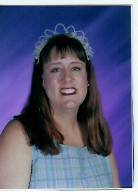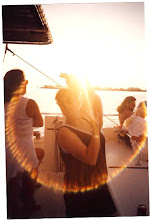
Aliki. (1999). William Shakespeare & the globe. New York: Harper Collins Publishers.
Book Type/Pages:
Picture/48
Grade Level:
This book is appropriate for grades three through six.
Curriculum Links:
This book could be used during social studies and English literature studies.
Author Credibility:
Aliki has written and illustrated many books for children. For this book, Aliki acknowledges colleagues from the Shakespeare’s Globe Theatre, Temple University, and from Folger Shakespeare Library for assisting with her research.
Awards:
1999 Boston Globe-Horn Book Award
ALA Booklist Editor’s Choice
Child Magazine Best Book of the Year
ALA Notable Children’s Book
Book Summary:
This book is a pictorial biography of William Shakespeare and the Globe Theatre in London. It starts in chronological sequence at Shakespeare’s birth and continues past his death. The latter part of the book chronicles Sam Wanamaker’s dream of reconstructing a replica of the Globe Theatre in London. The finished theatre was opened on June 12, 1997.
National/State Standards:
Social Studies standards:
Time, Continuity, and Change
People, Places, and Environments
Individual Development and Identity.
Illustrations/Graphics:
The illustrations appear to be watercolor and colored pencil. Aliki outlines figures in black, giving them proper emphasis in the illustrations. The illustrations range from being large and covering almost an entire page, to small and many on a page. Throughout the book there are decorative scrolls separating each act, or section in the book. The illustrations are fun and make for interesting reading. The smaller illustrations, coupled with captions or quotes, make the reader feel as if they have uncovered a small treasure while reading.
Access Features:
Important access features in this book include navy blue endpapers, an aside or author’s note, a prologue, a map of London with important places marked, a list of Shakespeare’s works, a chronology of events listed in the book, a list of words and expressions used everyday that Shakespeare coined, and a list of sites to visit for more information. In addition, the sections of the story are divided into acts and scenes to mirror the format of a play. Throughout the book are quotes from Shakespeare’s plays.
Use in My Classroom:
I would use this book in my classroom during a study of theater history, Elizabethan history, or the contributions of William Shakespeare in literature.
My Response to the Book:
I loved this book! I enjoyed the quotes, captions, and other interesting information that was found at the bottom of each page. I was captivated by the London Bridge. I did not remember that the bridge had over 200 houses and stores on it. There was even a church located on the bridge! I found it very interesting that not much solid information is known about Shakespeare. Most information regarding his life was gleaned from legal documents and his plays. The list of commonly used words and expressions was also interesting. I was not aware that Shakespeare was the first to use some of the same phrases that we still use today.
Related Texts:
Bard of Avon: The Story of William Shakespeare by Diane Stanley
Shakespeare for Kids: His Life and Times: 21 Activities by Colleen Aagesen
DK Readers: Welcome to the Globe: The Story of Shakespeare’s Theatre
by Linda Martin
Shakespeare’s Globe: An Interactive Pop-Up Theatre by Toby Forward
A Child’s Portrait of Shakespeare by Lois Burdett



















No comments:
Post a Comment